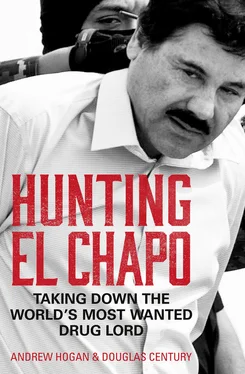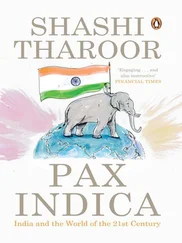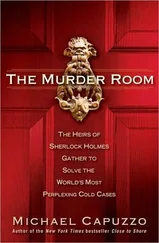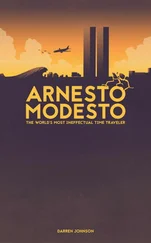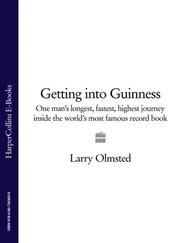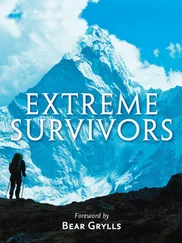I hit the gas and came to a skidding stop near the rear of the target vehicle, and, with my gun drawn, I rushed the driver’s door.
“Police! Show me your hands! Show me your hands!”
The role player was so startled he didn’t even react. I reached in through the door and grabbed him by the head—hauling him from the vehicle and throwing him face-first onto the asphalt before cuffing him.
My team passed the practical, but I caught pure hell from our instructor during the debrief. “Think you’re some kind of goddamn cowboy , Hogan? Why didn’t you wait for your teammates before initiating the arrest?”
Wait?
I held my tongue. It wasn’t that easy to unwire the aggression, the street-cop instinct, honed during those years working alone as a deputy sheriff with no backup.
That tag—Cowboy—stuck with me for the final weeks of the academy.
I graduated in the top of my class and, with my whole family present, walked across the stage in a freshly pressed dark blue suit and tie to receive my gold badge from DEA Administrator Karen Tandy, then turned and shook the hand of Deputy Administrator Michele Leonhart.
“Congratulations,” Michele said. “Remember, go out there and make big cases.”
THE PRISON WAShis playground.
Down in Jalisco—the home of Mexico’s billion-dollar tequila industry—Chapo was living like a little prince. On June 9, 1993, after successfully slipping into Guatemala, he was apprehended by the Guatemalan army at a hotel just across the border. The political heat was too intense: he couldn’t bribe his way out of this jam. It was the first time his hands had felt the cold steel of handcuffs, and his first police mug shot was taken in a puffy tan prison coat. Before long, Guzmán was aboard a military plane, taken to the Federal Social Readaptation Center No. 1, known simply as Altiplano, the maximum-security prison sixty miles outside Mexico’s capital.
By now the public knew more about Chapo. The young campesino had dropped out of school and sold oranges on the streets to help support his family. Later he’d been a chauffeur—and allegedly a prodigious hit man—for Miguel Ángel Félix Gallardo, a.k.a. “El Padrino,” the godfather of modern Mexican drug trafficking.
Born on the outskirts of Culiacán, Gallardo had been a motorcycleriding Mexican Federal Judicial Police agent and a bodyguard for the governor of Sinaloa, whose political connections Gallardo used to help build his drug-trafficking organization (DTO). A business major in university, Gallardo had seen a criminal vision of the future: he united all the bickering traffickers—mostly from Sinaloa—into the first sophisticated Mexican DTO, called the Guadalajara Cartel, which would become the blueprint for all future Mexican drugtrafficking organizations.
Like Lucky Luciano at the birth of modern American organized crime, in the late 1920s, Gallardo recognized that disputed territory led to bloodshed, so he divided the nation into smuggling “plazas” and entrusted his protégé, Chapo Guzmán, with control of the lucrative Sinaloa drug trade.
While he was behind bars after his Guatemalan capture, Guzmán’s drug empire continued to thrive. Chapo’s brother, Arturo, was the acting boss, but Chapo himself was still clearly calling all the shots—he was now ranked as the most powerful international drug trafficker by authorities in both Mexico and the United States.
Chapo was moving staggering amounts of cocaine—regularly and reliably—from South America up through Central America and Mexico and into the United States. These weren’t small-time muling jobs, either: Chapo’s people were moving multi-ton shipments of Colombian product via boat, small planes, even jerry-rigged “narco subs”—semi-submersible submarines capable of carrying six tons of pure cocaine at a time. Chapo’s methods of transport were creative—not to mention constantly evolving— and he thereby earned a reputation for getting his loads delivered intact and on time. Chapo expanded his grip to ports on Mexico’s Atlantic and Pacific coasts and strong-armed control of key crossing points—not just on the US-Mexico border but also along Mexico’s southern border with Guatemala.
Chapo embedded lieutenants of the Sinaloa Cartel in Colombia, Ecuador, Costa Rica, El Salvador, Guatemala, and Venezuela, giving him more flexibility to negotiate directly with traffickers within the supply chain. His criminal tentacles, versatility, and ingenuity surpassed even his more infamous predecessors, like Pablo Escobar. Headline-making seizures of Chapo’s cocaine—13,000 kilograms on a fishing boat, 1,000 on a semi-submersible, 19,000 from another maritime vessel en route to Mexico from Colombia—were mere drops in the cartel’s bucket, losses chalked up to the cost of doing business.
Even from behind bars, Chapo had the insight to diversify the Sinaloa Cartel’s operations: where it had previously dealt strictly in cocaine, marijuana, and heroin, the cartel now expanded to the manufacture and smuggling of high-grade methamphetamine, importing the precursor chemicals from Africa, China, and India.
On November 22, 1995—and after being convicted of possession of firearms and drug trafficking and receiving a sentence of twenty years—Chapo arranged to have himself transferred from Altiplano to the maximum-security Federal Social Readaptation Center No. 2, known as Puente Grande, just outside Guadalajara.
Inside Puente Grande, Guzmán quickly built a trusted relationship with “El Licenciado”—or simply “El Lic”—a fellow Sinaloan, from the town of El Dorado. El Lic had been a police officer at the Sinaloa Attorney General’s Office before being appointed to a management position in Puente Grande prison.
Under El Lic’s watch, Chapo reportedly led a life of luxury—liquor and parties, and watching his beloved fútbol matches. He was able to order special meals from a handpicked menu, and when that grew boring, there was plenty of sex. Chapo was granted regular conjugal visits with his wife, various girlfriends, and a stream of prostitutes. He even arranged to have a young woman who was serving time for armed robbery transferred to Puente Grande to further tend to his sexual needs. The woman later revealed Chapo’s supposed romantic streak: “After the first time, Chapo sent to my cell a bouquet of flowers and a bottle of whiskey. I was his queen.” But the reality was more tawdry: on the nights he got bored with her, it was said he passed her off among other incarcerated cartel lieutenants.
It was clear that Chapo was the true boss of the lockup. With growing fears of being extradited to the United States, he planned a brazen escape from Puente Grande.
And sure enough, just after 10 a.m. on January 19, 2001, Guzmán’s electronically secured cell door opened. Lore has it that he was smuggled out in a burlap sack hidden in a laundry cart, then driven through the front gates in a van by one of the corrupt prison guards in a mode reminiscent of John Dillinger’s famous jailbreaks of the 1930s.
The escape required complicity, cooperation, and bribes to various high-ranking prison officials, police, and government authorities, costing the drug lord an estimated $2.5 million. At 11:35 p.m., the prison warden was notified that Chapo’s cell was empty, and chaos ensued. When news of his breakout hit the press, the Mexican government launched an unprecedented dragnet, the most extensive military manhunt the country had mounted since the era of Pancho Villa.
In Guadalajara, Mexican cops raided the house of one of Guzmán’s associates, confiscating automatic weapons, drugs, phones, computers, and thousands of dollars in cash. Within days of the escape, though, it was clear that Guzmán was no longer in Jalisco. The manhunt spread, with hundreds of police officers and soldiers searching the major cities and sleepiest rural communities.
Читать дальше
